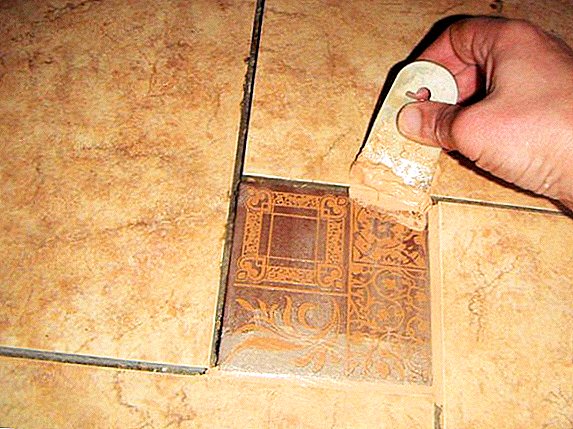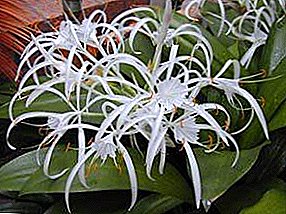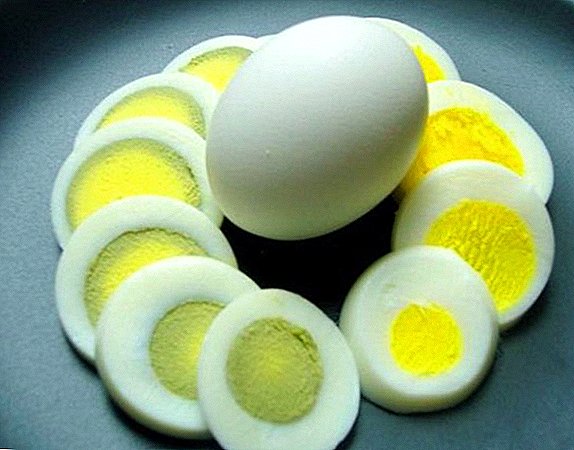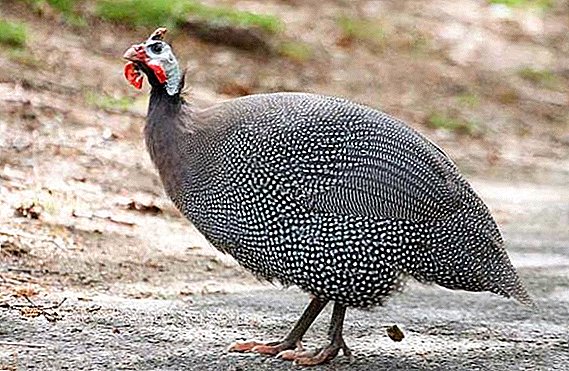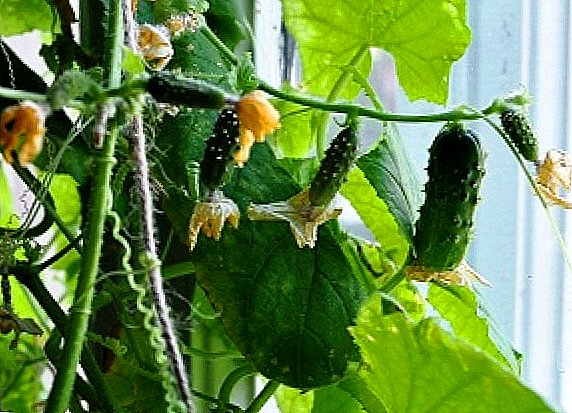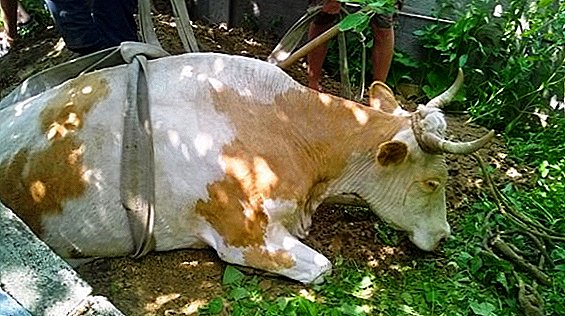 Taking care of his herd, the farmer must not only provide him with good living conditions and a full-fledged diet, but also respond in time to the manifestation of diseases. To help animals cope with ailments, it is necessary to know the symptoms of each one in order to distinguish them and select the correct treatment. This will be our article.
Taking care of his herd, the farmer must not only provide him with good living conditions and a full-fledged diet, but also respond in time to the manifestation of diseases. To help animals cope with ailments, it is necessary to know the symptoms of each one in order to distinguish them and select the correct treatment. This will be our article.
Infectious diseases of cattle
This group of diseases is dangerous not only for the entire cattle population, but also for humans. All these diseases are united by sudden manifestation and rapid development, as well as the complexity of treatment. Some of them force farmers to significantly reduce the herd.
Actinomycosis
Pathogen - Actinomyces bovis (fungus). It enters the body of the animal through skin damage. 
Symptoms:
- appearance of nodules (actinomyc) on the head and jaw;
- gradual growth of nodules;
- fistula formation on the pharynx, making breathing difficult;
- yellowish pus comes out of the fistula.
Consider in more detail the symptoms and methods of treatment of actinomycosis in cattle.
Treatment. When recognizing the disease at an early stage, the use of iodine compounds is effectively injected into the nodules. Antibiotic therapy is also carried out: oxytetracycline is introduced into actinomycomy 200 thousand U of young animals up to one year and 400 thousand U of the rest within 4-6 days.
You can use polymyxin (900 IU diluted in 20 ml of a half-percent solution of novocaine) 1 time in 10 days. The most effective way to deal with the disease - an operation. The nodule is cut along with the capsule. 
Prevention:
- do not graze cows in lowlands, in damp and wetlands;
- isolate the sick individual from the rest of the herd;
- change pasture;
- improve the diet of cattle;
- Always steam up roughage before giving it to an animal.
Important! Relapse is characteristic of actinomycosis.
Rabies
The disease causes the neurotropic virus Rabies lyssavirus, which is transmitted with saliva through a bite.
Symptoms:
- inadequate behavior (a cow rushes at kinsmen and a farmer, eats rags, etc.);
- refusal to eat or drink;
- profuse salivation;
- violation of swallowing function;
- lack of fear.

Treatment. To overcome the disease is impossible. A sick animal must be quickly isolated from the herd, to score and burn the carcass.
Prevention:
- timely vaccination.
You will probably find it helpful to familiarize yourself with the symptoms and methods of rabies prevention in a cow.
Brucellosis
The causative agent of the disease is the bacterium Brucella abortus, which enters the body through mucous membranes, respiratory tract and skin microtrauma.
Symptoms (mild):
- miscarriages at 4-7th month;
- the birth of weak calves;
- afterbirth delay;
- endometritis and other diseases of the uterus;
- udder swelling;
- mastitis.

Treatment. The disease is not treatable, so the infected animal is slaughtered.
Prevention:
- timely vaccination;
- regular disinfection of barns;
- disinfection of the barn after a miscarriage;
- growing young stock separately from sick cows.
Leukemia (leukemia, leukemia)
Infectious disease affecting the circulatory system.
Symptoms (usually visible in the last stage):
- enlarged lymph nodes;
- enlarged spleen;
- exhaustion;
- decline in productivity.
Treatment. Cope with the disease is impossible.
Read about how to identify and cure leukemia in a cow in time.
Prevention:
- regular blood analysis RID and ELISA;
- if the analysis is positive, conduct culling;
- purchase of new livestock in proven farms;
- vaccination;
- compliance with the rules of antiseptics;
- isolation of sick chaffers;
- compliance with quarantine when acquiring new individuals.

Leptospirosis (icterus hemorrhagic fever, Vasiliev’s disease)
The causative agent is the bacterium Leptospira interrogans, which affects the internal organs of the animal. Often the disease is asymptomatic.
Symptoms:
- weakness;
- temperature increase up to 41 ° С;
- anemia;
- painful urination;
- blood in the urine;
- rapid pulse;
- pain when breathing;
- violations in the work of ZHTK;
- bruises on the mucosa, skin;
- calving problems;
- jaundice on the 3rd day.
Treatment:
- Amoxicillin 150 (single injection intramuscularly or under the skin at a dosage of 1 ml per 10 kg of weight);
- Floridox (intramuscular injection into the neck of calves at a dosage of 1 ml per 7.5 kg of weight once a day for 3-5 days);
- antibiotics (tetracycline, treptomycin);
- syntomycin;
- glucose;
- caffeine;
- biovit

Prevention:
- regular inspection of livestock;
- compliance with quarantine after the purchase of new animals;
- adhere to standards in the care and maintenance of livestock;
- the destruction of rodents in the barnyard;
- regular disinfection of the barn.
Important! It is necessary to transfer a sick animal to a diet and to provide him full rest.
Smallpox
The causative agents are Coworthopoxvirus and Vaccina orthopoxvirus.
Symptoms:
- rash on udder, scrotum;
- depressed state;
- lethargy;
- loss of appetite;
- reduced milk yield;
- temperature rise;
- fever.
Treatment:
- isolation of the sick individual;
- improved diet;
- daily milking;
- rash smeared with collodion;
- ulcers are treated with antiseptics and cauterized;
- the nose is washed with 2-3% solution of boric acid;
- Boric and vaseline ointments are used to accelerate wound healing on the udder.

Prevention:
- quarantine for arriving animals;
- regular barn disinfection;
- ensure normal conditions of detention;
- careful pasture selection (not wet or marshland);
- vaccination.
Tuberculosis
The causative agent is Mycobacterium tuberculosis bacillus, which leads to the formation of specific nodules on the internal organs.
Symptoms:
- temperature 39.5-40 ° C;
- wet cough with sputum in the morning;
- dyspnea;
- when listening to the lungs rattles are heard;
- swollen lymph nodes;
- weight loss;
- diarrhea;
- discharge from the uterus.
Treatment. A sick individual is sent for slaughter. 
Prevention:
- vaccination;
- quarantine for newly arrived cows;
- compliance with the rules and regulations on the maintenance of cattle;
- regular disinfection of the barn and equipment;
- feeding only high-quality food;
- when a sick animal is found, to conduct timely isolation and, if necessary, the slaughter of unsuccessful livestock.
Trichophytosis (ringworm)
This disease refers to the fungal.
Symptoms:
- the appearance of bumps that eventually turn into spots;
- on stained wool bleached, disheveled;
- the spots become covered with a crust, which falls off, and a bald spot remains;
- itching of affected areas.
Pastoralists should consider the signs and methods of treating trichophytosis in a cow at home.
Treatment:
- UV irradiation;
- stain treatment with a 10% formalin-kerosene emulsion solution;
- applying spray "Zoicol" on the affected areas (spray evenly, grabbing 1-2 cm of healthy skin, repeat 3-4 days 3-4 times);
- treatment of stains with imaverol.

Foot and mouth disease
The virus penetrates through the mucous membranes and manifests itself as bubble-ulcerative wounds.
Symptoms:
- temperature rise;
- lower milk yield;
- dryness and inflammation of the mucous membranes of the mouth, eyes;
- loss of appetite;
- profuse salivation;
- creaking teeth;
- swelling of the skin around the hoof;
- udder ulcers;
- mucous milk.
Learn how to manifest and how to treat FMD.
Treatment:
- isolating a sick animal in a clean, ventilated area;
- transfer to soft feed;
- regular washing of the mouth with water with 2% acetic acid or 0.1% potassium permanganate solution;
- with strong lesions, an ointment is used (anestezin 2.5 g, novocaine 2.5 g, copper sulfate 5 g, fish oil 20 g, petroleum jelly 70 g);
- 1 time in 1-2 days hoofs smeared with tar mixed with fish oil (1: 1);
- transfer of a sick individual to a diet;
- prophylactic vaccination.

Prevention:
- vaccination;
- good conditions of detention;
- feeding quality food.
Did you know? The number of cattle in the world is increasing annually by 2%.
Non-contagious diseases
Diseases that are not transmitted from a sick animal to a healthy one are considered non-contagious. Among this group there are acquired and congenital ailments.
Pneumonia
Pneumonia is of several types:
- loburyarnaya;
- catarrhal;
- purulent;
- interstitial;
- hypostatic;
- atelectatic;
- mycotic;
- putrid;
- aspiration.

Symptoms:
- depressed state;
- weakness;
- loss of appetite;
- cough;
- fever;
- temperature is about 40 ° C;
- diarrhea;
- wheezing in the lungs.
Treatment:
- isolation of the patient in a warm ventilated room;
- improved nutrition;
- taking drugs that improve the process of digestion;
- sulfanilamide (at 0.02-0.05 g per 1 kg of mass);
- for calves - 50% solution of novarsenol, 5 drops, 2 times a day, 3 days;
- inhalation with turpentine and soda.
Prevention:
- hardening livestock since childhood;
- feeding calves with colostrum in sufficient quantities;
- balanced diet;
- keeping cattle in good conditions.
 Feeding calves with colostrum, as prevention of pneumonia
Feeding calves with colostrum, as prevention of pneumoniaDetention of an afterbirth
After the calf was born, the afterbirth should appear (within 6 hours). But sometimes it is delayed.
Symptoms:
- visible part of the afterbirth (not always);
- loss of appetite;
- temperature rise;
- disorder in the digestive tract;
- reduced milk yield;
- the cervix is open;
- the animal slouches a bit;
- on the 4-5th day, pus is released from the uterus.
Treatment:
- artificial stimulation of the uterus (synestrol, pituitrin, oxytocin);
- 250-300 ml of 40% glucose, 100-150 ml of 10% calcium chloride solution are injected for detoxification;
- as a last resort - an operative measure.

Prevention:
- balanced nutrition, especially during pregnancy;
- comfortable conditions of detention.
Esophagus occlusion
It occurs due to the animals eating insufficiently chopped feed (corn, root crops, oilcake), or when a foreign body enters the esophagus.
Symptoms:
- urge to vomit;
- cough;
- groans;
- nerve movements of the tail;
- frequent swallowing of saliva.
Treatment. To make sure of the diagnosis, pour the liquid into the animal's throat. If there is a problem with the esophagus, the fluid will escape through the nose. In this case, you must actively, with pressure, move your hands from neck to head of the animal. This manipulation should push the foreign body down the throat.
If the procedure does not work, it is necessary to introduce an elastic probe into the esophagus and pour vegetable or liquid paraffin through it. Then give the cow platifillin, propazone or atropine. 
Prevention:
- feed only chopped food;
- if you send a cow to graze on the field after harvesting root vegetables, then feed her well before running.
Mastitis
This is an inflammation of the udder in cows, resulting from bruises, poor sanitation during maintenance and milking.
Symptoms:
- there are blood clots in the milk;
- udder swelling;
- high temperature;
- loss of appetite.
We advise you to read about how to treat mastitis in a cow.
Treatment:
- intravenous "Novocain" 0,25% based on sodium chloride (0.5-1 liters per 1 kg of mass);
- antibiotics prescribed by a veterinarian;
- rubbing udder ichthyol or camphor ointments;
- masticid, penersin, mastisan inside the udder through the catheter for 3-4 days;
- manual milking every 2-3 hours;
- washing the udder with cold water 5 times a day;
- transfer to dry food;
- minimum drinking.

Prevention:
- keeping chickens in dry and clean rooms;
- washing the udder before each milking;
- hand sterility before milking;
- introduction to the diet of enzymes, pribiotics that increase the immunity of animals;
- after calving, immediately allow the baby to the udder so that it sucks the colostrum and milk;
- careful milking and care of the udder;
- Milking on a strict schedule.
Poisoning
A cow can poison itself by eating a poor-quality product, a poisonous plant, nitrates or pesticides.
Symptoms:
- bloating;
- diarrhea with blood;
- depressed / agitated state;
- active salivation;
- convulsions;
- temperature rise;
- rapid breathing, palpitations;
- loss of appetite.

Treatment:
- gastric lavage with potassium permanganate;
- prick in the ear of a 2% solution of methylene blue (1 ml per 1 kg of weight), calcium gluconate, vitamins A, E, D, ascorbic acid, if the poisoning is caused by boiled root vegetables;
- 1-2 l of a 0.5% solution of acetic acid, 0.1-0.2% solution of potassium permanganate (0.5-1 l), intravenous 10% solution of hexamine, 30% solution of glucose ( 0.2-0.3 l) and 5-10 g of diuretin in case of poisoning by alfalfa, lupine, Sudanese;
- methyleneblau (10 mg per 1 kg of body weight, 4% aqueous solution) and 20% caffeine solution (20 ml) for poisoning with nitrates.
Find out what to do if the cow is poisoned.
Prevention:
- on pastures, in time to mow down plants that are not eaten by cows, until they have given seeds;
- in dry times reduce grazing time;
- regularly check hay for harmful plants;
- do not give moldy hay;
- do not graze cows in places where chemical treatment of plants was carried out for at least 20 days;
- Do not graze the herd in areas where roots were treated with nitrates.
 Mowing inedible plants for cows - one of the measures to prevent poisoning
Mowing inedible plants for cows - one of the measures to prevent poisoningTympania of the scar
Timpany rumen - the accumulation of a significant amount of gases in the pancreas (rumen). It is usually observed in the summer when a cow eats a large amount of fresh, wet grass or drinks plenty of fluids after a meal.
Symptoms:
- bloating of the left abdomen;
- restless state;
- the cow stops chewing gum;
- the animal constantly gets up and lies down;
- temperature rise.
Treatment:
- pasture change;
- dietary review;
- massage of the problem area;
- raising the front of the animal;
- pouring cold water over the left side or swimming in the river;
- introduction into the rumen of the animal probe in the acute form of the disease;
- washing the scar with 10 liters of water (with the opposite conclusion).

Prevention:
- morning feeding with hay before grazing;
- after eating a large amount of juicy grass a cow does not give her to drink;
- feed only high-quality food;
- observe feeding regimen;
- limit in eating the food that causes fermentation;
- do not graze livestock in wet areas;
- to water calves with milk with the help of drinkers.
Traumatic reticulitis and pericarditis
Occurs when traumatizing the peritoneum mesh with foreign objects.
Symptoms:
- temperature rise;
- the decline in motility of the scar;
- lethargy;
- the desire of a cow to lie down and press its hind legs under itself;
- all animal movements are smooth;
- groans during bowel and bladder emptying;
- poor appetite;
- painful belching;
- slight increase in temperature.
Treatment:
- if a foreign body is magnetised and lies free, then it is removed with a special probe;
- stuck foreign body is removed by surgery.

Prevention:
- regular cleaning of the area from foreign objects;
- equipment of devices for the preparation of food magnetic traps;
- do not tie a torn leash with wire;
- to enrich the diet with vitamins and minerals, so that cows do not have the desire to lick metal objects;
- unpack bags of hay not in the barnyard.
Milk fever
It is a serious nervous disease.
Symptoms:
- loss of appetite;
- lowering the temperature;
- nervousness;
- oppression;
- violation of internal secretion;
- muscle twitching;
- wobbly gait;
- the cow has no strength to stand up;
- in severe form, the cow lies on its side, its head on its chest;
- lack of reaction to a prick at a severe form.
Treatment:
- intravenous 10% solution of calcium chloride (200-400 ml), 40% glucose solution (200-250 ml);
- injection of 20% caffeine solution under the skin;
- 25% magnesium sulfate solution intramuscularly (40 ml), 2 500 000 IU of vitamin D2.

Prevention:
- do not overfeed cows when their lactation fades in the dry season;
- to diversify the diet;
- enter vitamin D2 intramuscularly before calving (10 million IU once);
- after calving, feed the cow with vitamin-mineral mixtures, glucose, probiotics;
- eliminate from the diet juicy food and concentrates for 7-10 days before calving and after it.
Udder Diseases in Cows
Diseases of the udder cows cause a lot of trouble dairy farms. Milk yield is reduced or it is necessary to completely reject the dairy herd. Therefore, it is more profitable to prevent the disease than to fight with it.
Edema
It is the result of stagnant processes in the udder.
Symptoms:
- an increase in the volume of the whole udder or some part of it;
- udder to the touch like a dough;
- blueness of the skin;
- pain is absent;
- the skin is cold;
- milk may become watery.

Treatment:
- exclusion from the diet of high-calorie and juicy food;
- milking 5 times a day;
- after milking - udder massage (move your hands to its base);
- reducing the amount of fluid you drink;
- walking
Farmers should learn how to properly treat udder swelling in cows.
Prevention:
- regulate the diet of young chicks during pregnancy and after it;
- keep clean, warm;
- the room must be well ventilated;
- before calving exclude concentrated and succulent feed from the diet;
- minimize salt intake.
Udder injury
Occurs due to mechanical damage to the udder, which leads to subcutaneous hemorrhage.
Symptoms:
- the appearance of abrasions, bruising on the udder;
- with a strong blow - hematoma;
- difficult to milk the milk;
- organ soreness;
- possible the presence of blood in the milk.

Treatment:
- applying a cold compress on the 2-3rd day and beyond - warm;
- the imposition of a supporting bandage;
- the introduction of a 10% solution of calcium gluconate;
- in case of severe hematoma - open on the 5-6th day and treat as a wound.
Important! Massage is strictly prohibited.
Prevention:
- do not keep cows crowded;
- isolation of buttocks;
- regular udder inspection for injuries.
Furunculosis
Purulent-necrotic inflammatory process due to the penetration of microbes into the body.
Symptoms:
- the formation of hard painful tubercles on the udder;
- palpation of large tubercles noticeable fluctuation;
- pus is released from a bursting boil.
 Treatment:
Treatment:- wash affected areas with soap or mild disinfectant solution;
- hair cutting on the udder;
- around the inflamed areas, wipe the skin with 2% salicylic or camphor alcohol;
- to accelerate the maturation of the furuncle lubricate ichthyol;
- keeping the cow clean;
- change in diet.
Prevention:
- content in good conditions;
- proper feeding;
- immunity support.
Diseases of hooves in cows
Problems with the hooves of cows occur during frequent movements of the herd along a bad road, with inappropriate care of animals, due to the presence of chronic diseases.
Consider in more detail all the details of the treatment of hoof diseases in cows.
Laminitis
Inflammation between the hoof and the horn shoe.
Symptoms:
- the cow begins to limp;
- hoof deformity;
- the cow hurts to walk and she tries to lie more;
- the appearance of bruises in the horny part of the shoe.

Treatment:
- isolation and complete rest;
- feeding high-quality food without concentrates;
- water little;
- intravenous calcium chloride and novocaine;
- use of antihistamines;
- the imposition of cold hoof compresses;
- cleaning and trimming the hoof after improvement.
Prevention:
- balanced diet;
- content in normal conditions;
- cow support in the prenatal, clan and postpartum period;
- fencing from stress;
- feeding according to age and activity;
- regular cleaning, timely hoof trimming.
Strawberry disease
Manifested by a change in the skin in the cracks and tiara of the hoof.
Symptoms:
- lameness;
- the appearance of red bumps on the hoof.
 Treatment:
Treatment:- ensuring complete peace of mind;
- menu change;
- enriching the diet with minerals and vitamins;
- cleaning the hoof.
Prevention:
- content in normal conditions;
- regular hoof condition check.
Corolla cellulitis
Subcutaneous purulent inflammation of the corolla.
Symptoms:
- lameness;
- edema of the front and intercavity zones;
- depressed state;
- loss of appetite;
- temperature rise;
- decline in milk yield.

Treatment:
- a sick cow is tied and a soft litter is placed under her feet;
- 0.5% solution of novocaine (80-100 ml, together with 1-1.5 million ED of benzylpenicillin, streptomycin) in the middle third of pastern (repeat after 2-3 days);
- 0.5% solution of novocaine (40-60 ml) with an antibiotic in the fiber above the intergame cleft.
Prevention:
- content in normal conditions;
- regular hoof inspection.
Parasitic diseases
This group of diseases is caused by helminths, protozoa, which enter the body of cattle.
Piroplasmosis
The causative agent - Piroplasma bigeminum - a parasite attacking red blood cells.
Symptoms:
- during the day the temperature rises to 42 ° C;
- sudden depression;
- anemia of the mucous membranes at the initial stage, after 3-4 days - yellowness;
- rebalancing of the intestine;
- change in color of urine (yellowish, reddish, dark brown);
- rapid pulse, breathing;
- cachexia.
Treatment:
- intramuscular / subcutaneous 7% aqueous solution of berenil (azidine) (3.5 mg / kg);
- 10% aqueous solution of diamedine (1-2 mg / kg) intramuscularly;
- diet;
- rest;
- vitamin B12 injections.

Prevention:
- regular chemoprophylaxis;
- fighting ticks;
- regular bathing of cattle, treatment with acaricides;
- stall maintenance of cows.
Teleasiosis
The causative agent is Thelazia rhodcsi nematodes, which attack the conjunctival sac and the third eyelid.
Symptoms:
- tearing;
- photophobia;
- conjunctivitis;
- keratitis;
- corneal clouding;
- at the last stage - loss of vision.
We advise you to consider the symptoms and methods of treatment of fever in cows.
Treatment:
- deworming (0.5% iodine solution);
- A 2-3% solution of boric acid (2-3 ml) is injected with a syringe under the third eyelid and conjunctival sac, a century massage.

Prevention:
- prophylactic deworming;
- fight against flies, carriers of infection;
- stall content.
Trichomoniasis
The causative agent is the unicellular parasite Trichomonas fetus attacking the genitals of cows.
Symptoms:
- swollen lips;
- inflammation of the vagina;
- the appearance of nodules on the vaginal mucosa;
- endometritis;
- pyometer;
- early miscarriages (2-4th month);
- pulp;
- inflammation of the prepuce, the penis;
- decrease in sexual activity.
Treatment:
- treatment of the uterus with an 8-10% solution of ichthyol, flavocridine, furatsilin (1: 1000);
- intramuscularly 1% solution of metronidazole (80-150 ml);
- subcutaneously with a 0.05% solution of prozerin (2 ml);
- bulls subcutaneously with 1% furamon solution (2 ml) and prepution treatment with a solution of nitrofuran preparations with 0.5% furazolidone suspension (50 ml / kg subcutaneously 3-5 times).

Prevention:
- isolation of sick individuals;
- use for insemination of semen only from healthy bulls.
Cysticercosis (Finnoz)
The causative agent - helminth Taeniarhynchus saginatus.
Symptoms:
- temperature 40-41 ° C;
- loss of appetite;
- diarrhea;
- swollen lymph nodes;
- heart palpitations.
Important! Symptoms disappear at 8-10th day, but recovery does not come.
Treatment. Not yet developed. 
Prevention:
- observance of health standards in the maintenance and slaughter of livestock;
- timely disposal of affected carcasses;
- preventive measures to combat worms.
Read more about how to properly treat cysticercosis of cattle.
Fascioliasis
Pathogen - worms of the genus Fasciola, affecting the liver.
Symptoms:
- depressed state;
- depositing;
- enlarged liver;
- exhaustion;
- pallor of mucous membranes;
- swelling of the eyelids, maxillary space, chest, lower abdomen.
Treatment:
- Hexichol (0.3 g / kg) is added to concentrated feed;
- Acemidophen (15 g / kg) once.

Prevention:
- timely deworming of livestock (at least 2 times a year);
- pasture drainage;
- use purified drinking water;
- regularly change pastures.
Did you know? For 2016, the number of cattle in Russia was 18,753 thousand heads, while in 2006 there were 23,514.2 thousand heads.
Cows have a large number of diseases. We have listed only the most common. As you can see, many of them are not easy to overcome, and some are impossible at all. Therefore, it is easier to prevent illness through preventive measures than to fight it.



